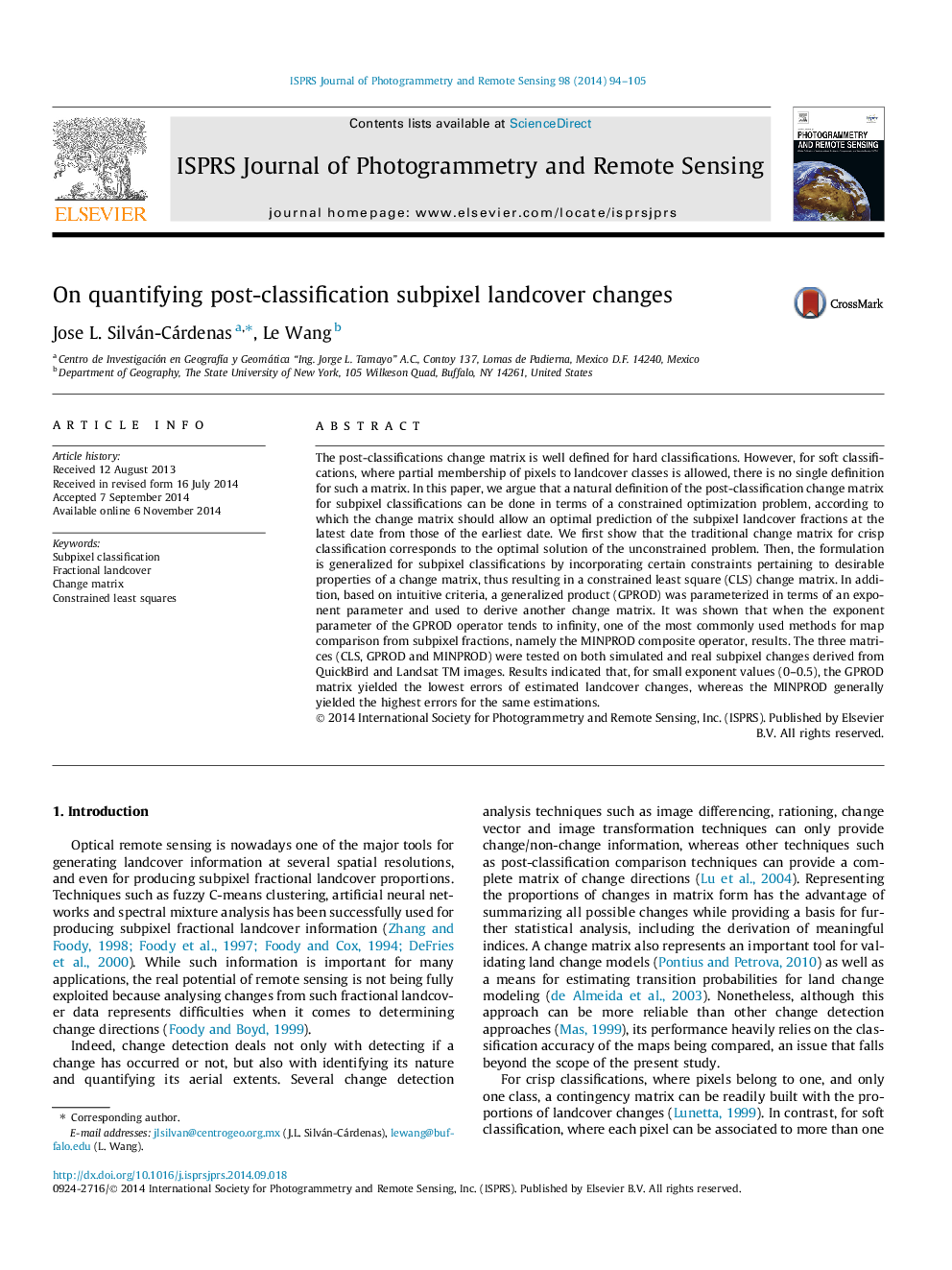| Article ID | Journal | Published Year | Pages | File Type |
|---|---|---|---|---|
| 6949554 | ISPRS Journal of Photogrammetry and Remote Sensing | 2014 | 12 Pages |
Abstract
The post-classifications change matrix is well defined for hard classifications. However, for soft classifications, where partial membership of pixels to landcover classes is allowed, there is no single definition for such a matrix. In this paper, we argue that a natural definition of the post-classification change matrix for subpixel classifications can be done in terms of a constrained optimization problem, according to which the change matrix should allow an optimal prediction of the subpixel landcover fractions at the latest date from those of the earliest date. We first show that the traditional change matrix for crisp classification corresponds to the optimal solution of the unconstrained problem. Then, the formulation is generalized for subpixel classifications by incorporating certain constraints pertaining to desirable properties of a change matrix, thus resulting in a constrained least square (CLS) change matrix. In addition, based on intuitive criteria, a generalized product (GPROD) was parameterized in terms of an exponent parameter and used to derive another change matrix. It was shown that when the exponent parameter of the GPROD operator tends to infinity, one of the most commonly used methods for map comparison from subpixel fractions, namely the MINPROD composite operator, results. The three matrices (CLS, GPROD and MINPROD) were tested on both simulated and real subpixel changes derived from QuickBird and Landsat TM images. Results indicated that, for small exponent values (0-0.5), the GPROD matrix yielded the lowest errors of estimated landcover changes, whereas the MINPROD generally yielded the highest errors for the same estimations.
Keywords
Related Topics
Physical Sciences and Engineering
Computer Science
Information Systems
Authors
Jose L. Silván-Cárdenas, Le Wang,
